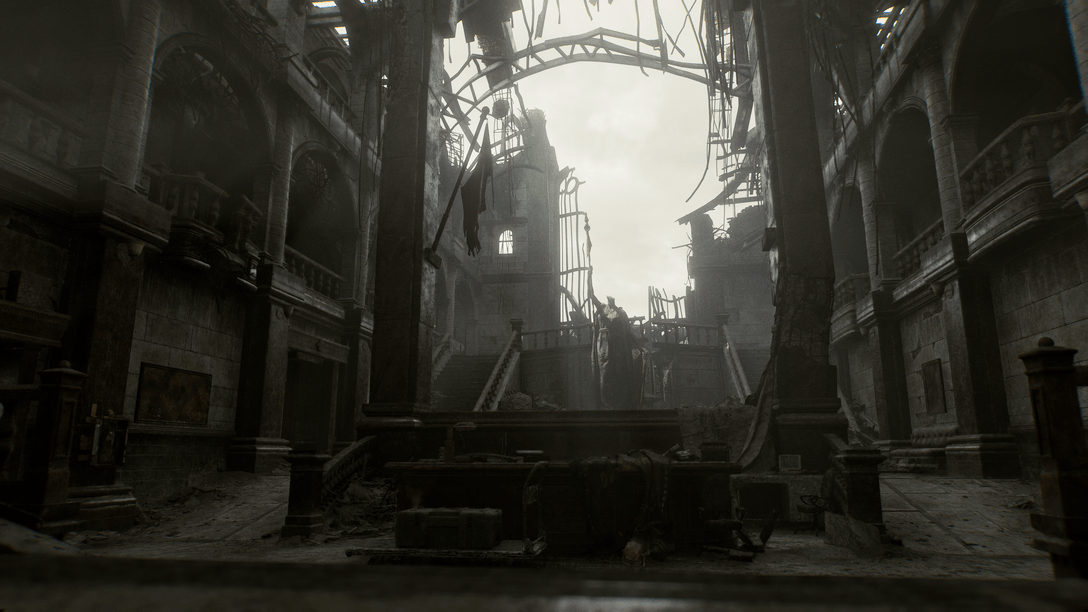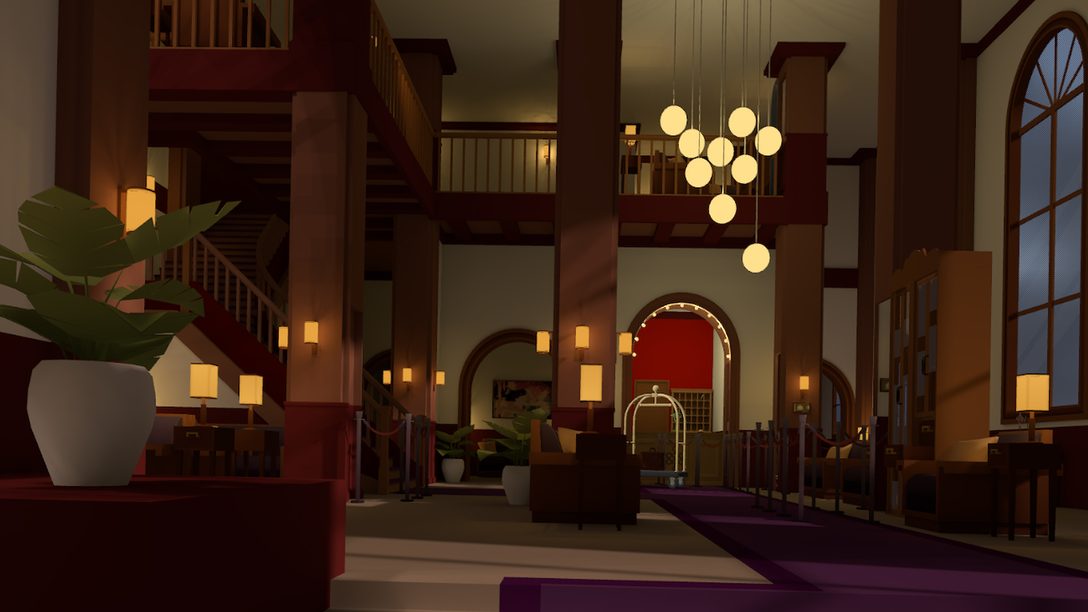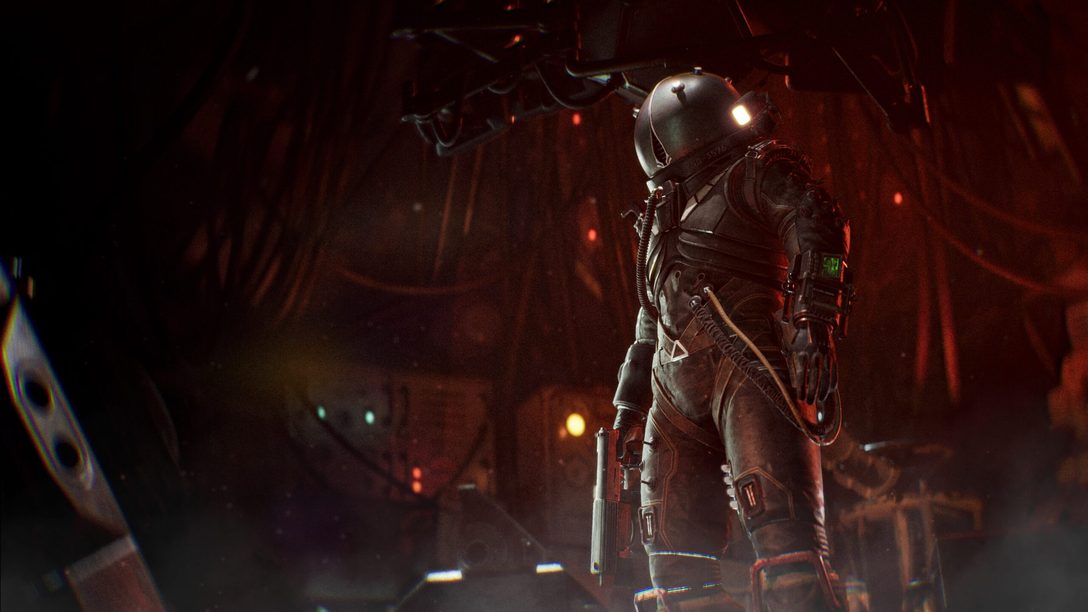
A story of darkest Basingstoke and the wondrous secret hidden there that’d give birth to Minter’s latest creation
So a couple of times a year I go to game expos, usually involving something retro. At these shows there’s a good intersection of a lot of different kinds of people, all with pretty nerdy interests that are a lot of fun. I usually stay in a hotel where there are also a lot of the arcade collecting crowd staying, and some good nights at the bar have ensued as they are an amiable and interesting lot to sink a few with. There’s that one guy who’s always got a bit of spliff, and that chap who never fails to buttonhole me and take me to task for the amount of mooing in my games; he really doesn’t like mooing. Anyway we’ll all sit round and talk shit until everybody’s thoroughly full most nights during the exhibition. Good times.
Last year after one particularly beer-sodden session at the bar, just before I staggered off to my pit for the night, one chap made a point of asking for my contact details; I thought little of it at the time and it was only a few months later that I remembered it when I received an unexpected phone call that wasn’t about triple-glazed windows or PPI. It was this chap and he wouldn’t really tell me what exactly he wanted, only that he reckoned he had something “extraordinary” to show me, since he thought I was somehow uniquely qualified to analyse it, or something like that. At first I thought he was just being a loony but he promised me it’d be something worth seeing, something related to the history of arcade games. In the end I said I’d come and see, hoping the while that he wouldn’t turn out to be an axe murderer or anything. I had to swear on Flossie’s name that I wouldn’t reveal the exact nature of what I was to see, and video or pics were strictly out of the question.
On the duly appointed day I set out for darkest Basingstoke* to meet up with this chap, who met me in the kind of disreputable old van that one could well imagine perverts luring victims into, and after half an hour’s drive or so we arrived at a somewhat forsaken-looking industrial estate. I can’t say I was feeling particularly reassured at all this and it was with a degree of anxiety that I entered a dingy-looking warehouse. However my feelings changed entirely when the chap turned on the lights to reveal ranks upon ranks of classic arcade games, most of them all set up and ready to play, others in various states of repair on their way to being restored. It was a lovely sight, and one that you can rarely see in this day and age except in VR recreations of 80s arcades. It would have been worth the trip, and Basingstoke, just to have the chance to play on some of these old beauties.
But that wasn’t why I’d been brought there.
In the corner, beneath a sheet, was hidden a single somewhat unusually-shaped cab. I was informed again of the terms upon which I would be shown what was beneath: no pictures, no video, no precise descriptions of gameplay, definitely no locations that could pin it down to anywhere closer than just the vicinity of darkest Basingstoke. Broad descriptions were ok, and of course the name is legendary. Mythological, even.
Upon agreeing once more to these terms the sheet was removed and the cab was revealed. The cab itself was rounded, almost organic-looking, and a foreboding black. A bright red joystick jutted from the front, looking almost anatomical, shiny and covered in a myriad of silver dots.
These were the terminals of what my host called “the effector/sensor lace”. Opening the back of the cab revealed the internals: three circuit boards packed densely with square black chips, none of them labelled, alongside a couple of other modules whose like I had never seen on any circuit board. A spiderweb of fine filaments descended from the control panel but were disconnected from the main board = for safety’s sake, I was told, as nobody really knew what the sensor lace actually did.
The CRT itself was also something highly unusual, with two necks feeding into the one tube much like Baird’s early attempts at a colour tube; apparently this was to allow the seamless combination of raster and vector graphics on the same display, a neat idea for the time I thought, and wondered why Atari had never come up with anything like that.
Finally it was time for me to play. the back was replaced and the cab turned on. The title screen appeared, the name floating in what looked like an infinite void which slowly began to fill with geometric forms pulsing and glowing in colour sequences that even Eugene Jarvis could never have imagined. I grabbed the joystick firmly – it felt oddly warm and I thought I felt a slight tingling, but I was assured the sensor lace wasn’t active so that could have just been my imagination. I pressed the one player button and…
I needn’t have been told that I couldn’t tell people detailed descriptions of the gameplay because I couldn’t even if I wanted to. My immediate thought was that the game had malfunctioned because the next thing I clearly remember is standing back from the machine, the words GAME OVER throbbing in Robotronian colour sequences.
My heart was racing and I felt a really weird combination of exhilaration mixed with a deep-seated anxiety whose origin I couldn’t identify. It felt like waking unexpectedly from a dream and for the first few seconds I was thoroughly confused. It took me a while to remember that I was really in Basingstoke, and why.
The atmosphere had changed, somehow, and not many words passed between us after the machine was switched off. An exchange of knowing glances seemed sufficient, the realisation of a shared understanding, of having been through a transformative experience, something difficult to put into words, something that transcended the very reality of Basingstoke itself.
The profundity felt laced through with filaments of anxiety, though – it was clear to me now why this game had been hastily withdrawn, if a single play could elicit such unease in its users. Some of the techniques used by the game obviously worked well, as the sense of enlightenment and euphoria attested. If only something could be implemented that could recreate those effects without causing deep-seated floating anxiety and temporary amnesia, perhaps that could be possible…
I pretty much left that thought on the floor of my brain as I headed away from Basingstoke. Behind me the AA building almost seemed like it was throbbing, in Robotronian colour sequences, against the skyline. As ever I had a lot of work to do when I got home, and the sheep to feed.
That was a couple of years ago now, and in the intervening months occasionally flashes of gameplay will come to me, micro memories of what the game was actually doing to me. Trying to recall precise details was as slippery as trying to trawl up details from a vanished dream, but I was able to form some more concrete broad impressions. The overriding thing was a tremendous sense of speed, rushing through geometric structures, the impression that I was surrounded by bright structures and pulsating light, particles that sleeted through my very brain, it felt like.
Then along came VR, and I started to wonder if I should pick up that thought I’d left on the floor of my brain back in Basingstoke. I’ve been dabbling in ludic psychedelia for a while now, and maybe the time and the medium was right now for me to attempt a game to at least in part replicate the effects, if not the exact gameplay, of that old legend. Leaving out all the bad stuff, of course.
Accordingly we began building a framework within which to create such a thing. To accurately convey the sensation of speed-rush that so strongly permeated the original game it was necessary to build an engine that could deliver everything we needed at 120 FPS without possibility of frame drops, and at a very high internal resolution.
With that in place and running our lightsynth framework (which took a good while) we were eventually able to show a proof of concept towards the end of last year. It was pretty sparse at that point, just a sketch of what it was really going to be, and I didn’t know how it’d be received at all. One of the guys remarked upon removing the headset that after a couple of minutes he’d felt like a Jedi.
Which made me think we were on the right track.
Now we’re nearly done, and we’ll be letting people sample a few levels of the game at Play Expo at the weekend. The game itself is fast, intense, but never upsetting, stressful or unpleasant. I really don’t like games that make you feel more stressed out when you finish playing that before you start. Despite all its speed and hyperstimulation, you actually find in play that the game has a relaxing, even a mildly therapeutic effect – I can get up grumpy of a Monday morning but a few minutes in the headset has me feeling happy and serene. Test subjects have described it as feeling like a nice session of meditation when they play.
Hopefully the game once released will live up to the name it takes from its legendary inspiration – without bringing with it any of the more controversial psychoactive effects of that peculiar game. I just want people to feel the speed rush, the relaxation, the euphoria.
I can only think of one person who definitely won’t enjoy the game. There is quite a bit of mooing.












Join the Conversation
Add a CommentBut don't be a jerk!
12 Comments
Loading More Comments